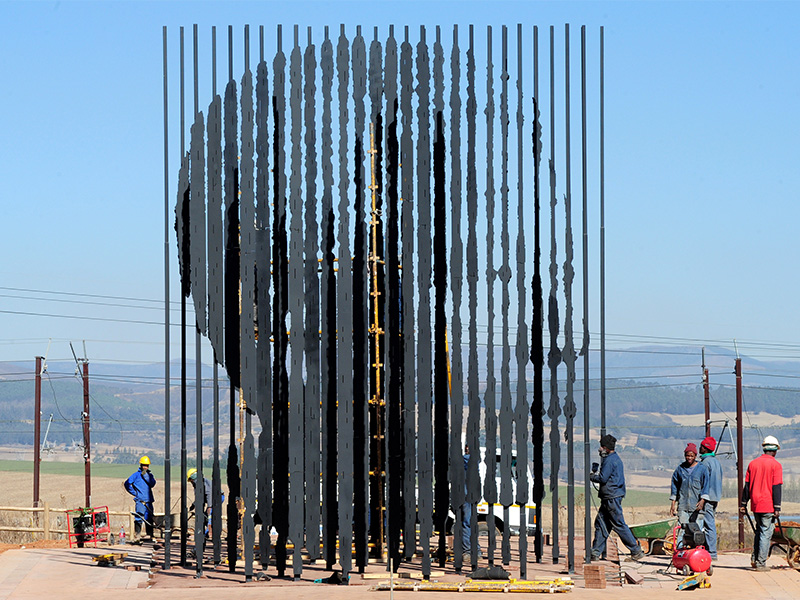
Eleven official languages, nine distinct provinces, topography that ranges from rugged mountain ranges to winding coastline and a vastly multicultural population make South Africa difficult to pin down. It’s not a place you can visit once and immediately comprehend or define in a few sentences. In many ways, South Africa is a place that defies definition. It’s a country emerging from the shell of its complicated history, redefining itself in ways that would not have been possible even three decades ago. It’s this ongoing process of reinvention that gives South Africa a unique edge, one that allows it to be so many things and offer so much to travellers seeking an atypical experience, one with the potential to continually surprise.
Well-known as a safari destination for those hoping to catch a glimpse of the Big Five (elephant, lion, buffalo, leopard and rhino), there’s so much more to South Africa than its abundance of wildlife, something I discover on a whirlwind trip through the cities of Johannesburg, Cape Town and Durban.
A New and Improving Johannesburg
Working hard to extinguish the embers of apartheid, Johannesburg is a city undergoing revitalization at a rapid pace. Once thought of as nothing more than a necessary stopover for travellers heading or returning from safari, Johannesburg is now a breakout star among South Africa’s most sought-after cities. The first thing I’m struck by en route from the airport is how vibrantly green the city is. There are over 10 million trees here, making it home to one of the largest swaths of man-made forest in the world. This palette of undulating shades of green is the backdrop for what is quickly becoming one of South Africa’s most popular urban retreats.
One of the most exciting aspects of Johannesburg’s revamp is its thriving art scene, something the city is extremely proud of. The best place to get immersed in the city’s impressive collection of galleries is along Art Strip, which stretches along Jan Smuts Avenue, through the neighbourhoods of Parkwood and Parktown and north to Rosebank. Standouts along the way include Everard Read, opened in 1913 and the oldest commercial art gallery in South Africa. Directly across from Everard Read sits CIRCA, award-winning for its innovative design involving a winding ramp lined with anodized aluminum posts, which cast an optical illusion-like shadow emphasizing the building’s curved design. Goodman Gallery was established in 1966, firmly in the era of apartheid and continues to showcase works that spark dialogue. Founded in 2002, Gallery Momo’s airy exhibition space often features more experimental artists, both established and up-and-coming.
If you really want to get a sense of a Johannesburg that has cast off the gritty reputation of the past, pay a visit to Sandton, known as ‘Africa’s richest square mile’ and one of the most rapidly expanding areas of the city. Home to over 10,000 businesses including the Johannesburg Stock Exchange and teeming with shiny condos, hotels and shopping centres, Sandton is the financial, retail and entertainment centre of Johannesburg. What could feel void of personality is actually an area that exudes more warmth than expected, thanks to the buzz of activity everywhere you look. Sandton is also where you’ll find Nelson Mandela Square, where a towering bronze statue of Nelson Mandela looks out over the European-style piazza filled with fountains, shops and people sipping drinks on patios.
Stay: The Four Seasons Johannesburg, with only 117 rooms and suites spread out in a low-rise village-like setting, feels more like a village than a hotel. Situated in the Tony Westcliff neighbourhood, the property is well located for sightseeing and offers refined comfort without being stuffy. Highlights include the spa’s secluded infinity pool and expansive views over Johannesburg from the hotel’s restaurants.
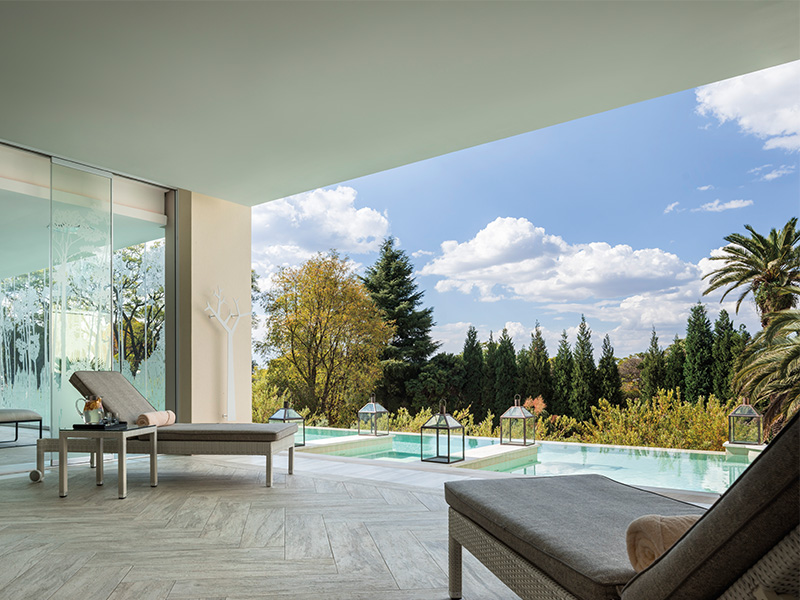
Get away: About an hour north of Johannesburg is Magalies River Valley, known as one of the best areas in the country to go hot air ballooning. Most people recommend Bill Harrop’s Original Balloon Safari and it’s not hard to see why upon meeting the charismatic Harrop, as much a showman as he is a veteran balloon pilot. The adventure starts well before dawn: Hovering at around 5,000 feet, the view below is a glorious patchwork of forest and farmland, and if you’re lucky, you might catch a glimpse of a giraffe or impala loping by. The gentle ride is capped off by a champagne breakfast on Harrop’s sprawling property.
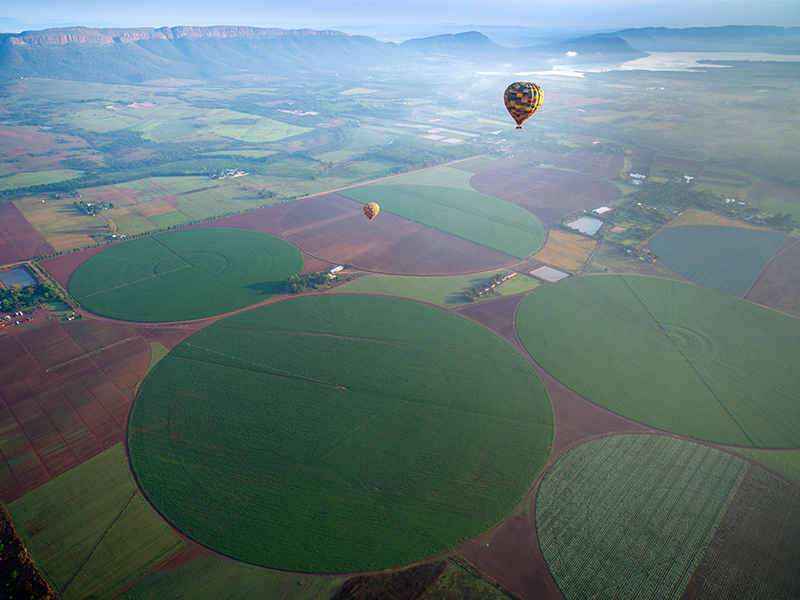
Laid Back Living in Cape Town
Ask anyone in South Africa and they’ll tell you that everything slows down in Cape Town. This may be a city, but Cape Town has the feel of a beachside resort town, albeit one with its finger on the pulse where fashion, craft beer and food are concerned. Overlooking it all is the majestic Table Mountain, making the coastal city one of the biggest draws in South Africa.
There’s no better place to experience South Africa’s crown jewel than on its historical working harbour, the Victoria and Albert Waterfront, which despite a constant hum of activity, feels completely relaxed. As throngs of tourists and locals slip by me, I take photos for a giggling bachelorette party and stroll past patios packed with people, but somehow the pace never seems to speed up. I can see why people come to Cape Town and then find themselves staying long after their expected departure date. Cape Town’s V&A Waterfront is also home to a multitude of opportunities to shop local. There are malls here, but the better bet is Watershed, a bright, warehouse-like space filled with locally made art, jewellery, fashion and textiles. Many designers and artisans here also have shops elsewhere in Cape Town, but Watershed offers the chance to shop them all in one place. If it’s food you’re after, the easy-to-navigate Waterfront Food Market makes it hard to resist eating more than you need to. More than 40 vendors briskly dole out an array of goodies, from empanadas to vegetarian Indian street food.
If you happen to be in Cape Town on a Saturday, wake up early and get yourself to the Old Biscuit Mill, home to the hugely popular Neighbourgoods Market. Open just one day a week, on Saturdays from 9 a.m. to 2 p.m., the market is a compact maze of creative food and drink vendors, artisans and purveyors of local goods – think farmer’s market on steroids. To my right, wood fired pizzas are being churned out to a line-up of patrons from a set-up no larger than a hot dog cart, while to my left coconuts get hacked open and handed out at lightening speed. In the market proper, a warehouse dappled with sunlight from the skylights above, it’s a sensory overload of colours, smells and sounds. Over 100 local vendors sell everything from handmade olive oil soap to jewel-toned macarons and jars of organic honey.
There’s more than one way to get to the top of Table Mountain, one of the New7Wonders of Nature, a list which also includes Ha Long Bay in Vietnam and South Korea’s Jeju Island. If you want to hike to the top, there are over 350 trails, all catering to different fitness levels. Alternatively, you can ride the cable car, which quickly and smoothly zips you to the top while slowly rotating, providing spectacular views leading up the mountain. At the summit, there’s ample space to explore and snap photos, three mountaintop trails and of course, those views over Table Bay and the city below. Keep your eyes peeled for the rock hyrax (also called a dassie), a furry animal that scampers around the top with little fear of people.
Stay: Cape Grace Hotel, situated just steps from the V&A Waterfront area, gets major points for service and location. Understated luxury is the name of the game here and the property manages to create an atmosphere that exudes warmth, but also maintains a timeless elegance. If you have time and an interest in whiskey, book a tutoured tasting at Bascule, the hotel’s subterranean bar that boasts a collection of over 500 whiskeys from around the world.
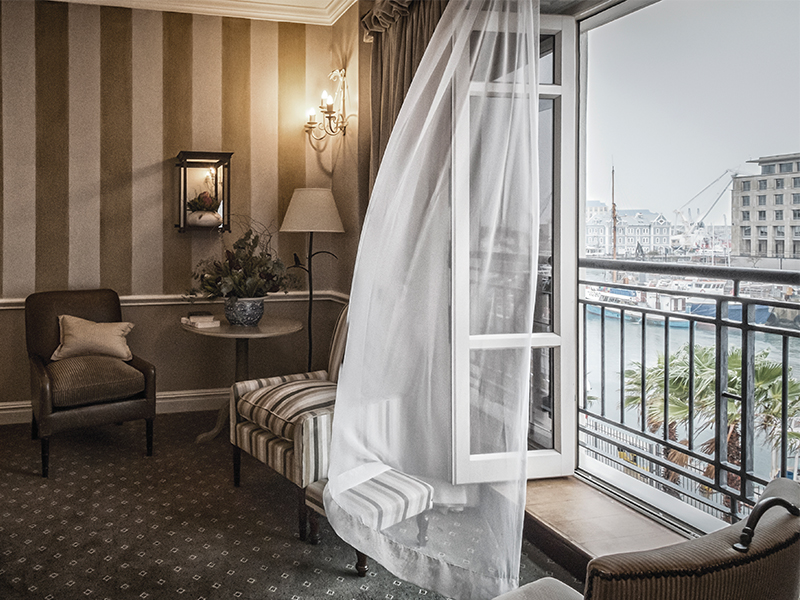
Get away: Take the drive 90 minutes outside of Cape Town, or if you’re feeling adventurous, hop a helicopter from Cape Town’s waterfront for a swift yet scenic ride to the seaside town of Hermanus, a popular vacation spot for locals as well as international travellers. The area is a jumping-off point for the Hermanus Wine Route, which includes Hamilton Russell Vineyards specializing in Pinot Noir and Chardonnay. Hermanus is also known as one of the best whale watching destinations in the world as well as a good spot to go shark cage diving. If you plan on spending the night, check in at luxe yet homey 11-room boutique hotel Birkenhead House. Sipping sparkling rose accented with house-made crème de cassis caviar by the oceanfront infinity pool is the ultimate way to be welcomed.
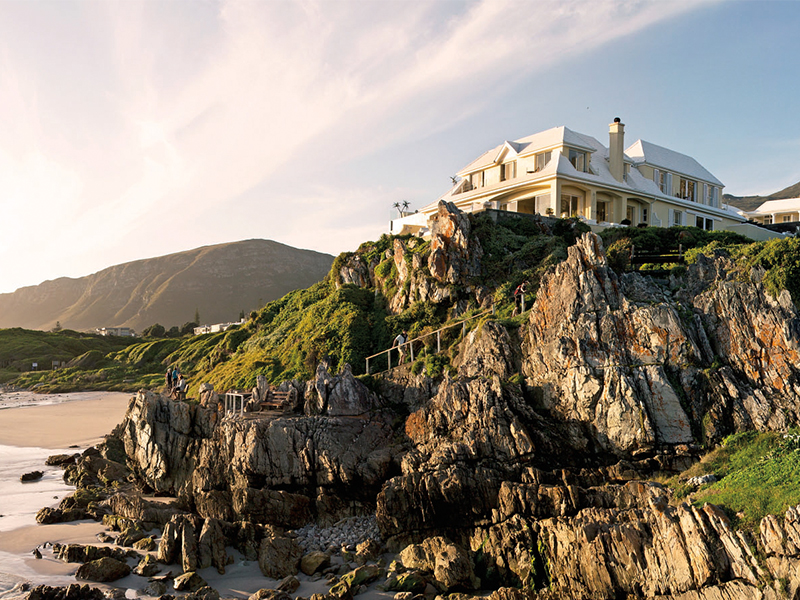
Two Lazy Days in Durban
The seaside city of Durban may not have the cachet of Cape Town or current buzz of Johannesburg, but it’s well worth a visit for its stellar beaches, unique vibe and colourful downtown core. The third largest city in South Africa is also home to one of the busiest ports on the African continent, giving Durban a working class feel. Art deco architecture pops up amidst faded colonial buildings and once-stately churches, creating an eclectic atmosphere that beckons to be explored.
Most travellers visit Durban for its kilometres of coastline, but the downtown area, with its mashup of markets, vendors and busy streets, shouldn’t be missed. Driving through the downtown area, there’s a noticeable lack of sheen; buildings are older and grittier, but that’s part of its raw appeal. Beaches are an easy sell, but downtown Durban makes you work a little harder to discover its charms. Victoria Street Market is a good place to start exploring. Skip over the tourist-y trinkets and instead head straight for the stalls piled high with Indian spices. Ask at any shop for a custom blend and watch as deft hands flit from one spice bin to the next, adding a bit of turmeric here, some star anise there, a pinch of fresh curry leaf, until the perfect balance is created.
Spice markets are one clue that Durban has the largest Indian population outside the subcontinent, something also evidenced by its most popular dish: bunny chow (or simply called a “bunny” by locals). A hollowed-out chunk of freshly-baked white bread gets stuffed with curry and topped with the bread from the centre. This is a dish served sans fork – it’s meant to be eaten with your hands, using the bread to scoop up the heaping helping of fragrant curry.
Once it’s time to hit the beach, Durban’s gleaming Golden Mile is one of the best places to do it. Large piers link stretches of toffee-hued sand and a paved walkway runs parallel to the water, making it easy to access your beach of choice on foot or just explore the area without having to watch for cars. Depending on what you’re looking for, be it calm waters or a place to catch a few waves, there’s sure to be a beach in Durban that can accommodate. A smattering of cafes, pubs and restaurants line the promenade so you don’t have to go far to refuel.
Stay: Durban’s bright and friendly Beverly Hills Hotel achieves a perfect balance of comfort and style and the beachfront location offers ocean views from every balcony and easy access to the sand. If you don’t feel like being on the beach, nab one of the plush chairs set up on the lawn overlooking the Indian Ocean or lounge by the large pool.
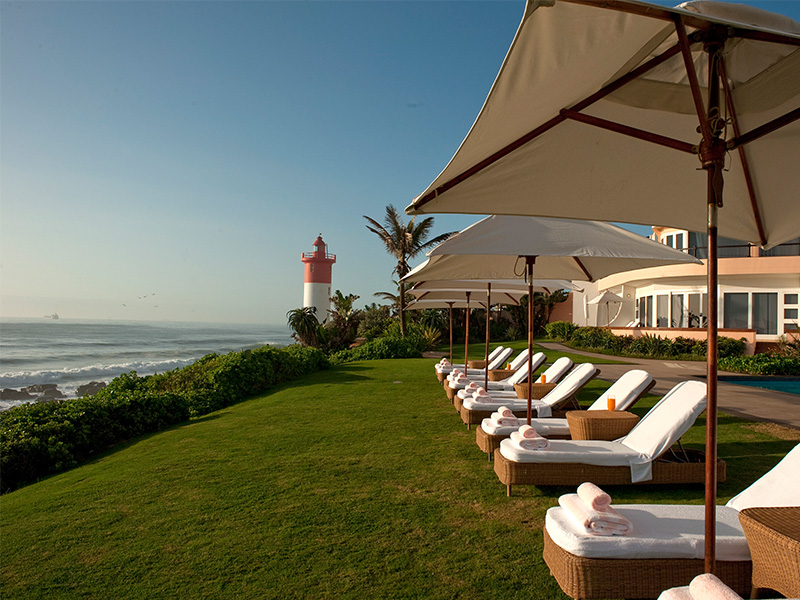
Get away: Savour the local flavour of South Africa’s arts and crafts route, Midlands Meander, about an hour outside of Durban. The aptly named route meanders past forests, farmland, rolling hills and small villages and the scenery makes it tough not to feel as if you’ve been transported directly to the English Countryside. This is where you can see artisans at work in their studios and shop for locally made goods including pottery, leatherwork, paintings and clothing. Go for a day trip from Durban or stay a few days at one of the area’s many inns and bed and breakfasts.
